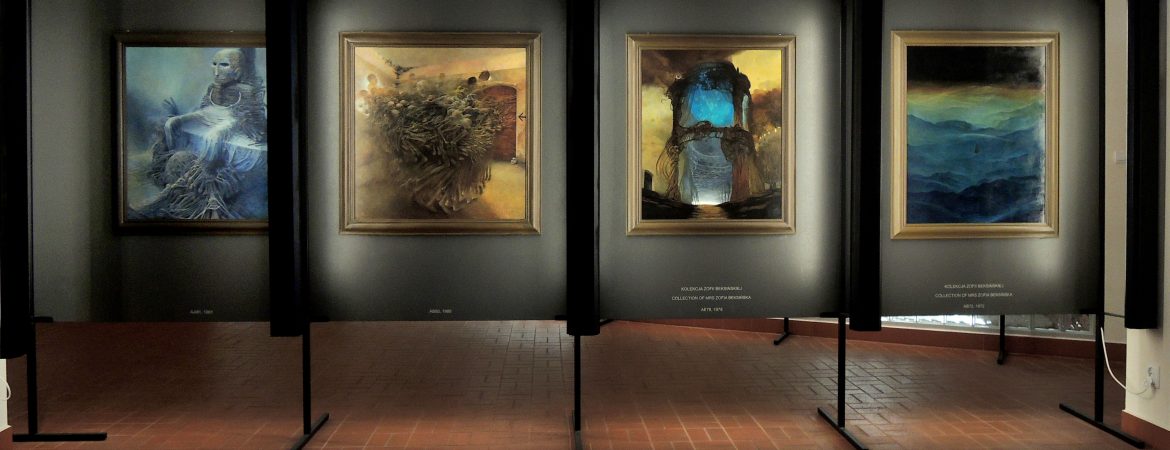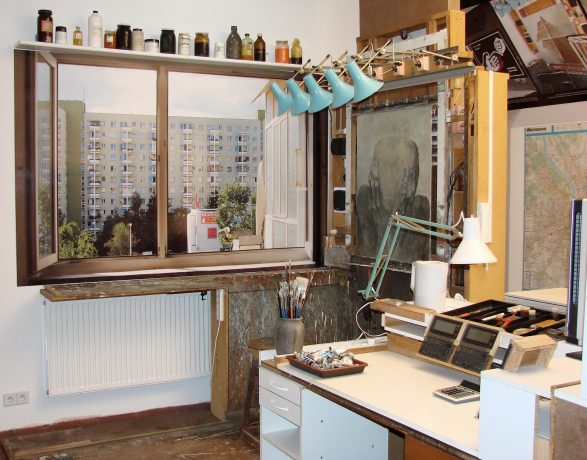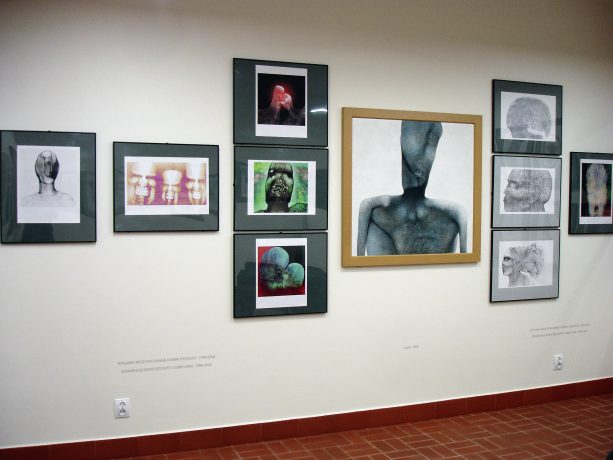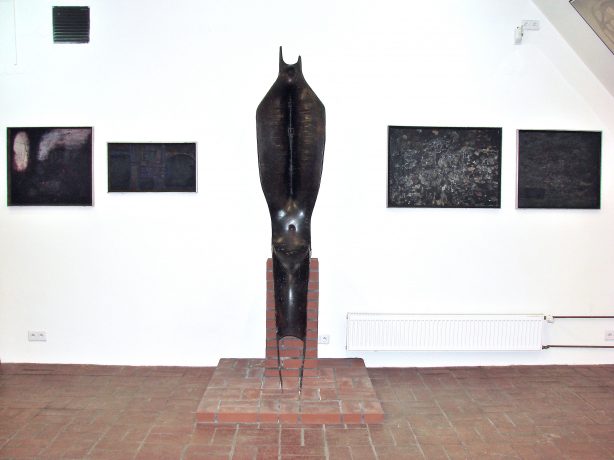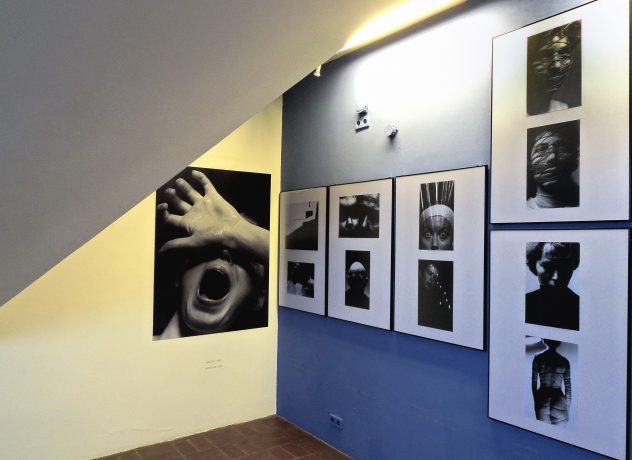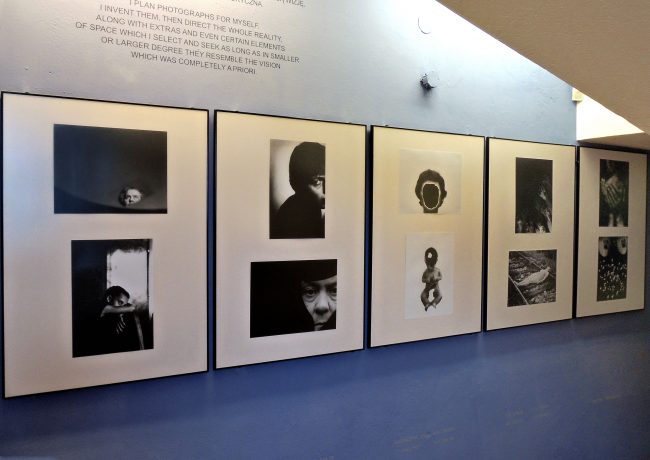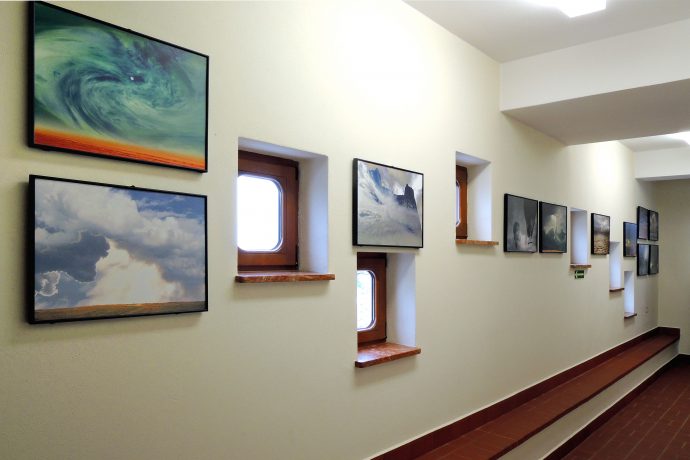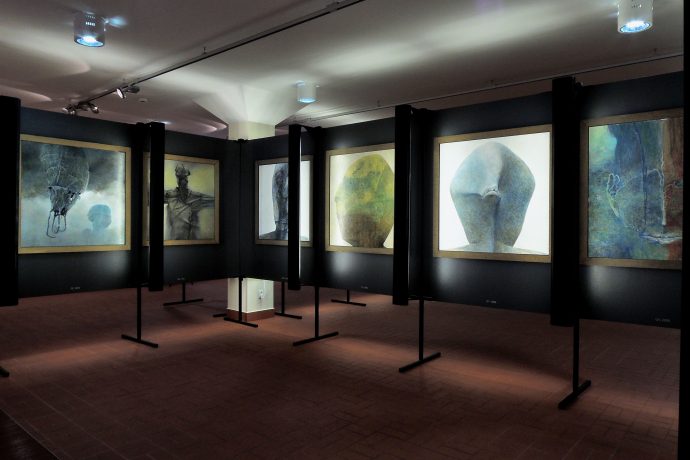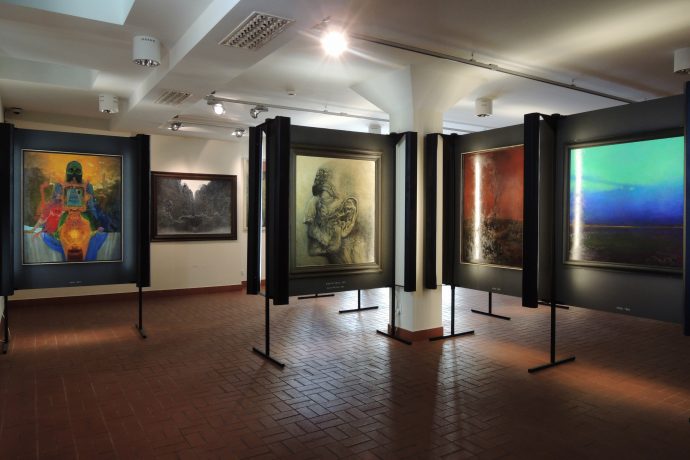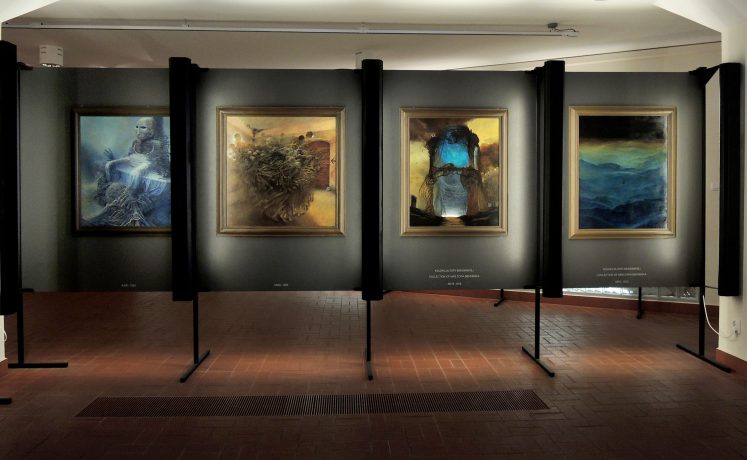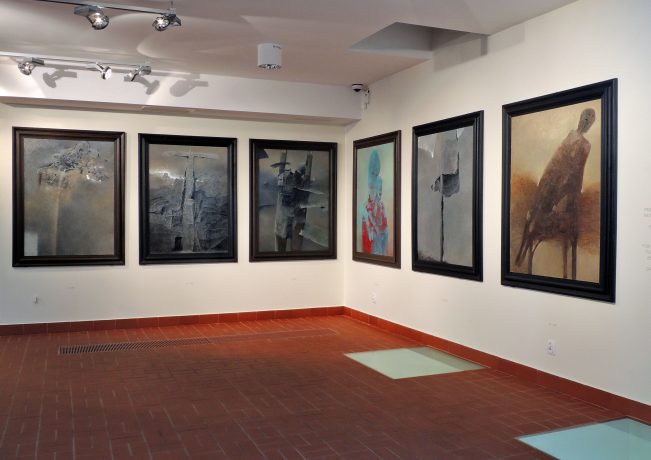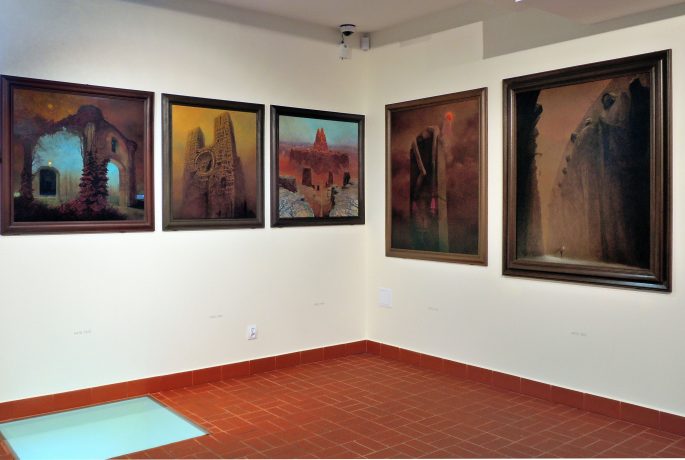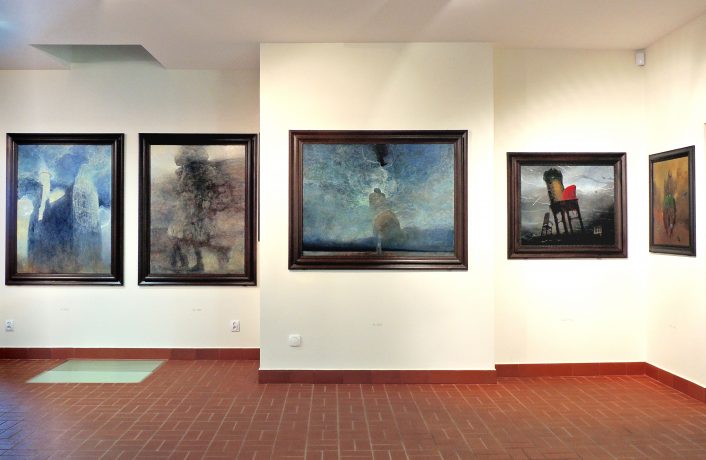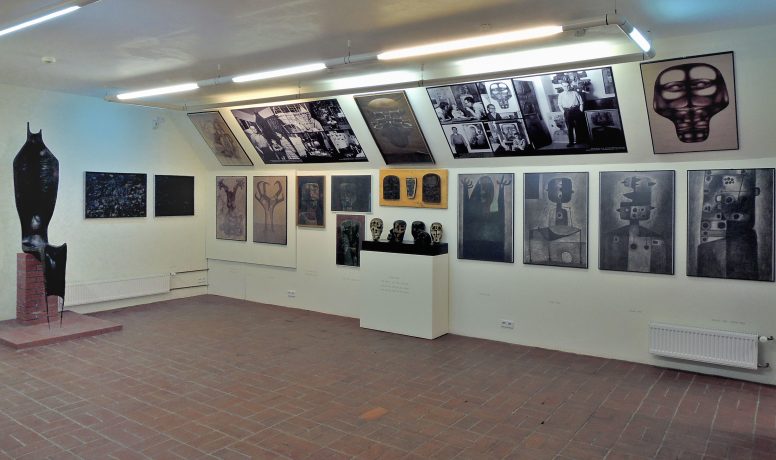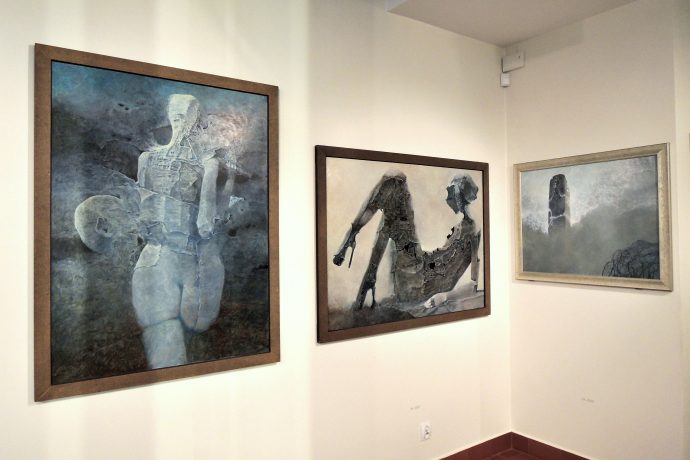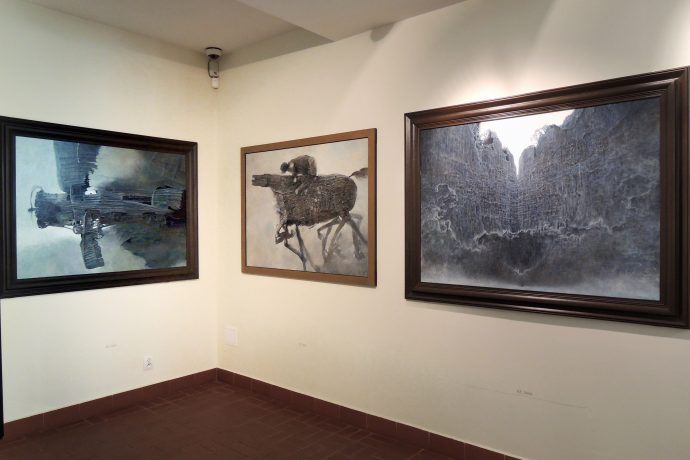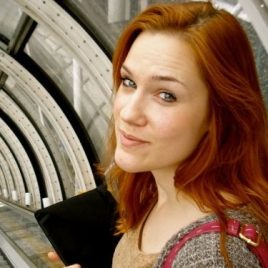We haven’t reached that far into southeast Poland yet, but today we will take you to Sanok. This border city distinguishes the civilized part of the Bieszczady Mountains from the wilder part. Sanok, which lies in the valley of the San river, is the royal city that received its city rights back in the 14th century, belonging at the time to the Russ district. The Bieszczady Mountains are one of the wildest areas in Poland and a perfect destination to escape from the city chaos. Sanok not only makes a perfect base spot for climbing trips, but also art enthusiasts, as somewhere in this landscape was born one of the most intriguing contemporary artists - Zdzisław Beksiński. Located at the castle, inside the Historical Museum of Sanok, is Beksiński Gallery, presenting most of his work to the public.
The Beksiński family was associated with Sanok for five generations. Zdzisław’s great grandfather arrived in the city in the 1840s and set up a boiler work business; Zdzisław’s grandfather was a city architect and designed quite a few buildings along with the layout of the city. Zdzisław was born in 1929 as the only child of Stanisław Beksiński and Stanisława Dworska. During the Second World War, Zdzisław was attending trading school while getting an education though the secret underground resistance to Poland's occupiers.
At first, Zdzisław wanted to follow his grandfather’s steps and decided to continue his education at the architecture department of Kraków University of Technology. He worked for several years as the Supervision Inspector at the constructions, living in Kraków and Rzeszów. Zdzisław was very passionate about multiple forms of art: photography, film, paintings and drawing. In 1955, he decided to go back to Sanok where he arrived already married to Zofia Stankiewcz. Back in his family town, Zdzislaw switched to work where he could develop his artistic nature a little bit. He worked as a stylist in the main contractor department in a bus company (originally started by his great grandfather). His designs were very characteristic mostly because of their innovative style or some surprising ergonomic solutions. At the same time, he signed up with Polish Photographic Society, as well as becoming a father to Tomasz (who later became a very tragic member of the Beksiński’s family history). Zdzisław worked part-time in order to have more free time for were then simply hobbies. In 1960 he, quite controversially, rejected the Guggenheim Museum Scholarship in New York.
In 1977 he finally decided to move to Warsaw, where he stayed until his death. The history of the Beksiński family is as dark as the painter’s work. At the first glance it was an ordinary family, but they were all coping with a lot of traumas, especially with Tomasz obsession with death. Zdzisław’s son had several suicide attempts and finally succeeded in 1999, after his mother death. It was his father who rescued him from the previous ones who eventually found him, when it was already too late. Zdzisław Beksiński spent his last years alone in his flat in Warsaw. His death was even more tragic as he was murdered at his home by the boy from the family he was helping. It was only a few days before his 76th birthday.
Young Beksiński first started with artistic pursuits with photography. His early photographs were in a way predicting what was to come. Next, Zdzisław was experimented with sculptures until he switched to painting in 1964. At that time, Beksiński was obsessed with Eastern Mysticism and his work is heavily influenced by it and full of symbols, mystery and catastrophic atmosphere. While painting, Beksisnski was always listening to music, which became a part of his artistic routine. His first big success brought the exhibition of his thirty paintings. Beksiński totally withdrew from the vanguard painting and approached art full of fantasy. Critics rejected his new ideas, but the public widely accepted it, thus allowing Beksiński to sell all the paintings at that time. Between the 70s and 80s, Beksiński was in what is called the „Fantastic Period,” as he drifted in the direction of dream-based creation full of metaphysical landscapes, fantastic architecture and sometimes the phantoms of some characters. In his last period of art, Beksiński focused more on the form and was painting, restricting mostly to the deformed human figures.
Beksiński Gallery in Sanok is the largest of its kind in the world devoted to the artist’s work. On display, you can find around 600 works of art. The Gallery takes you on the journey along with the artist and, as a visitor, you can experience all different transformations he went through in his career. The exhibition opens with the Sanok Chamber presenting photographs from 50s and Beksiński’s early works that were heavily rooted in abstraction. The following chamber is a faithful reconstruction of the painter’s Warsaw workshop room. The works presented include different artistic experiments, along with drawings, graphics, some multimedia work, films and photographs.
Beksiński decided to leave all his work to the city of Sanok. Because of this, his heritage returned to the place where it began. Although the Beksiński dynasty ended tragically, Zdzisław’s work will spread their name for years to come. A visit to the Gallery is an extreme experience and an absolute must for all art enthusiasts. When your visit is over, you can also check out the other chambers in the Castle that also belong to the Historical Museum of Sanok, most of them are devoted to art from the 15th through 19th century. It’s a real gem hidden in the wilder part of Poland, and after a huge dose of art you can always enjoy a walk in the mountains!
